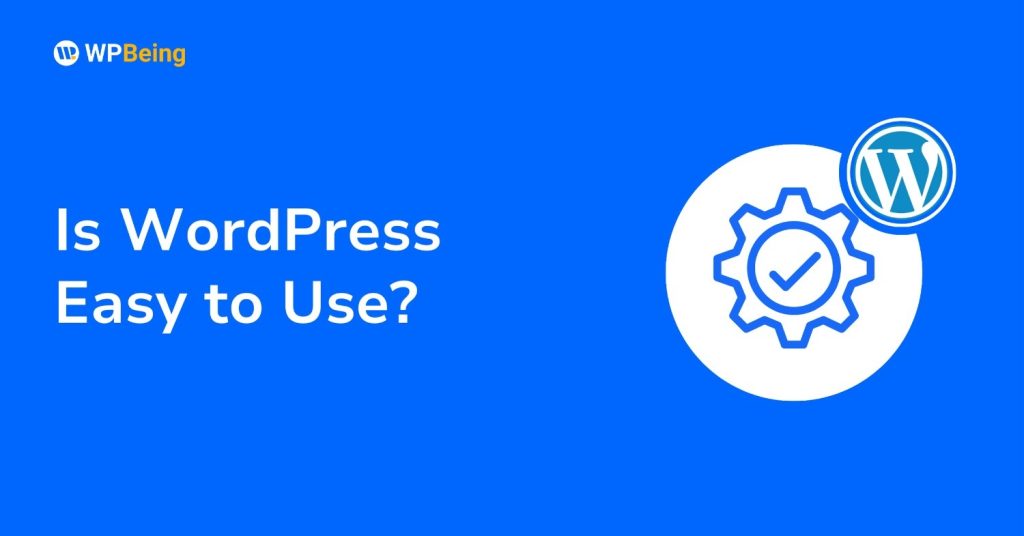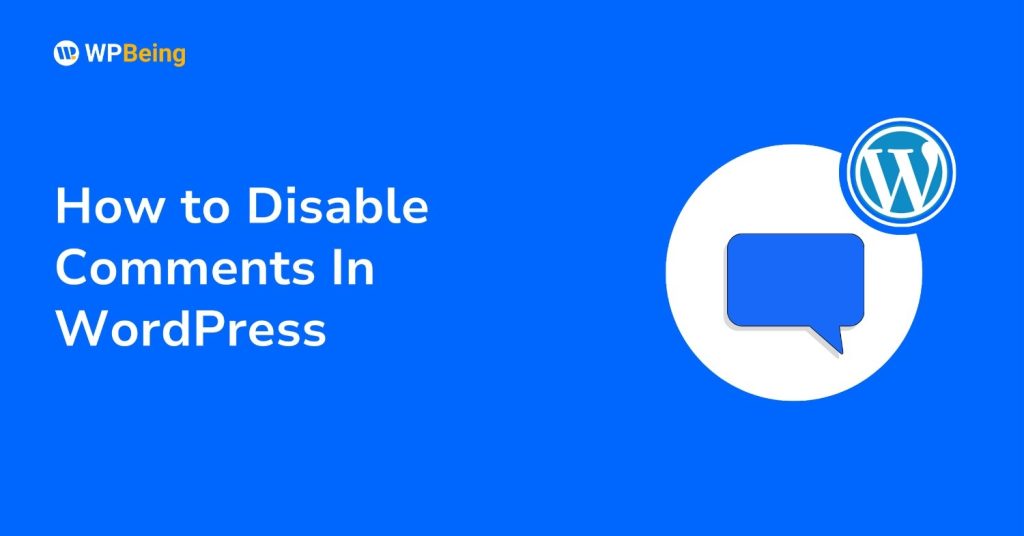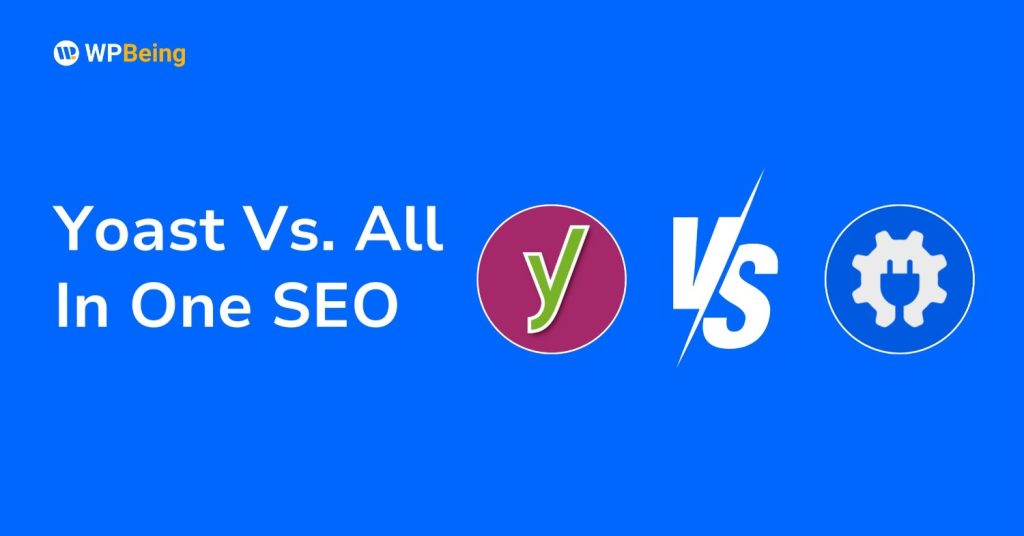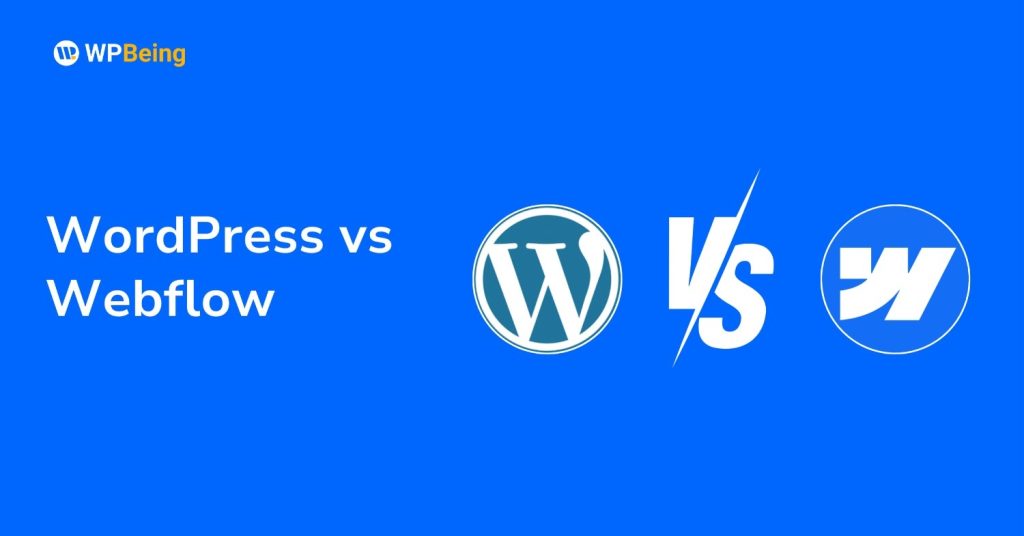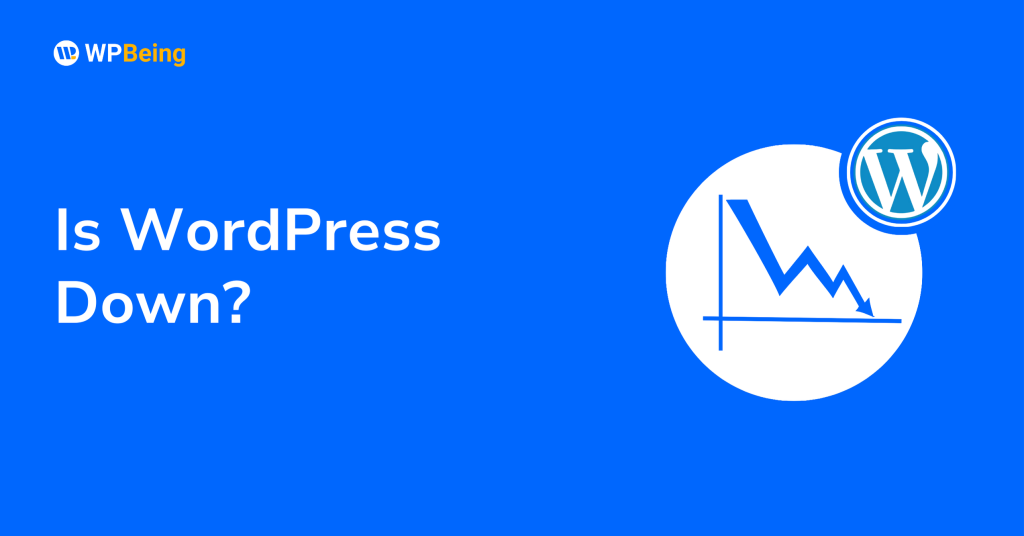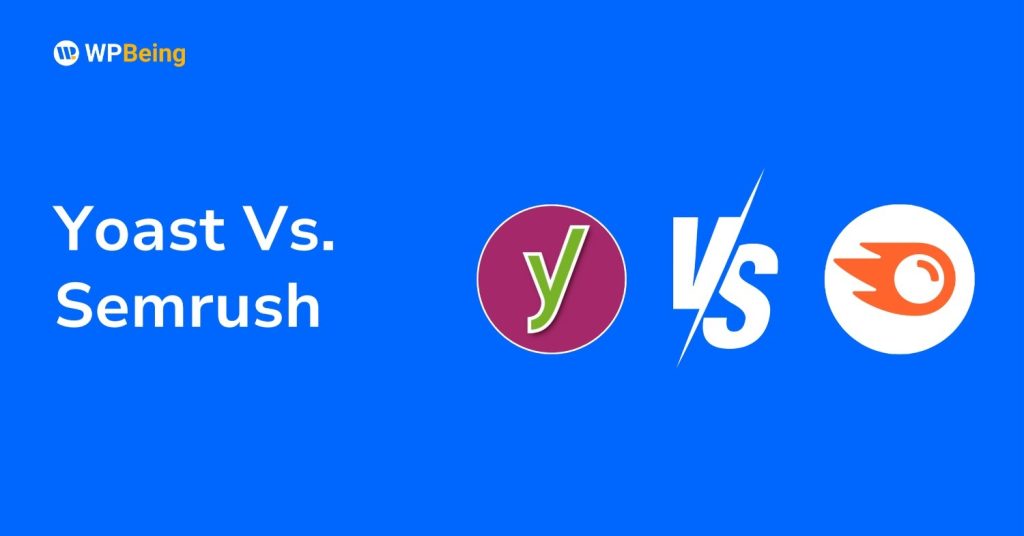SEO can feel overwhelming—especially for beginners—with countless rules and best practices to track. But what if you had a simple, actionable checklist to follow?
This guide offers exactly that: a 13-step WordPress SEO checklist to streamline your optimization process. From installing the right plugins to optimizing titles, URLs, and images, we’ll cover everything you need to boost rankings and traffic.
Whether you’re launching a new site or refining an existing one, this checklist ensures you nail the fundamentals.
Let’s dive in and simplify SEO—one step at a time!
WordPress SEO Checklist – 13 Essentials
The 13-point SEO checklist listed below will help you increase your website’s traffic and engagement.
| Set up Google Search Console, Bing Webmaster |
| Install WordPress SEO Plugin (RankMath/ Yoast SEO/ AIOSEO) |
| Setup Google Search Console, Bing Webmaster |
| Add Google Analytics To WordPress |
| Conduct Keyword Research |
| Create E-E-A-T Content |
| Optimize SEO Title & Meta Description |
| Use SEO Friendly URLs |
| Add ALT Text to Images |
| Add Internal Links to Your Content |
| Improve Your Content Readability (White space matters!) |
| Make Sure Search Engines Can Find Your Website |
| Optimize Your Website For Mobile |
| Check Your Website Speed |
Tip: Take a screenshot or a print of the above WPBeing.com 13-point checklist to keep a task list handy!
How This SEO Checklist Should Be Used?
SEO checklist can have various purposes. Similarly, this one wants to get started with SEO as quickly as possible. This is how you should use this checklist:
- As a starting point for a new website
- As a handy SEO guide for beginners
- To check the progress of your SEO practices
- To analyze the SEO of a previous website and find areas of improvement
- Ensure that all the foundation SEO practices are followed
Things To Know Before Using WordPress For SEO
Before using WordPress for SEO, it’s essential to be aware of several factors that can impact your site’s performance and security:
- Be Cautious with Plugins and Themes: Not all plugins and themes are created equal. Some may contain vulnerabilities that can be exploited by attackers.
- Keep Everything Updated: Regularly updating your WordPress core, themes, and plugins is crucial for maintaining security. Outdated software can have known vulnerabilities that hackers can exploit.
- Use Trusted Plugins and Themes: Opt for plugins and themes from reputable sources. The WordPress community has taken steps to address security issues by, in rare cases, taking control of plugins to fix vulnerabilities.
- Regular Backups Are Essential: Implementing a reliable backup solution is vital. Regular backups ensure that you can restore your site to a previous state in case of security breaches or other issues.
- Monitor for Malware: Be vigilant about malware threats. There have been instances where malware campaigns, such as ‘DollyWay,’ have compromised over 20,000 WordPress sites globally, redirecting users to malicious sites.
You can enhance your WordPress site’s security and SEO performance by staying informed and proactive about these aspects. Next, let’s move on with our checklist with details shared about each step.
1. Install A WordPress SEO Plugin
An SEO plugin makes it easier for a user to use on-page SEO best practices while it handles the technical side.
The popular choices include Yoast SEO, RankMath, and All in One SEO (AIOSEO). It’s easy to use, even if you’re an absolute beginner.
Doing on-page SEO is a breeze once you are past the initial one-time setup process.
An SEO plugin helps with essential tasks like creating an XML sitemap, adding schema markup, optimizing your site for social media, and improving your content’s readability.
It even provides on-page SEO scores and helps with local SEO and WooCommerce stores. This is how RankMath displays its on-page SEO score:
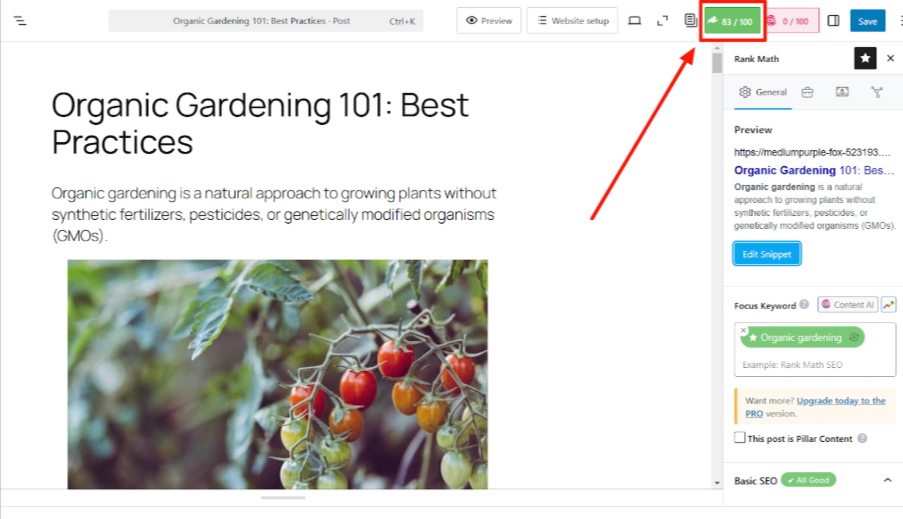
AIOSEO also includes a helpful SEO audit feature, alerting you to issues and providing actionable suggestions for improvement.
Whether you’re just starting or looking to improve your SEO, these SEO plugins can make the process much easier.
Read our guide on Rank Math Vs. Yoast SEO to determine which plugin is best for your SEO needs.
2. Set Up Search Engine Webmaster Tools
Next, you should set up some webmaster tools. These free tools help you track your website’s performance in the search engines.
Start with Google Search Console, Bing Webmaster Tools, and Yandex Webmaster Tools.
Setting up the Google Search Console is important because Google has a market share of around 78% in the world of search engines.
Here is what you can do with a webmaster tool:
- Track site performance: See the performance of your website over a period of time and which search terms bring visitors to your site.
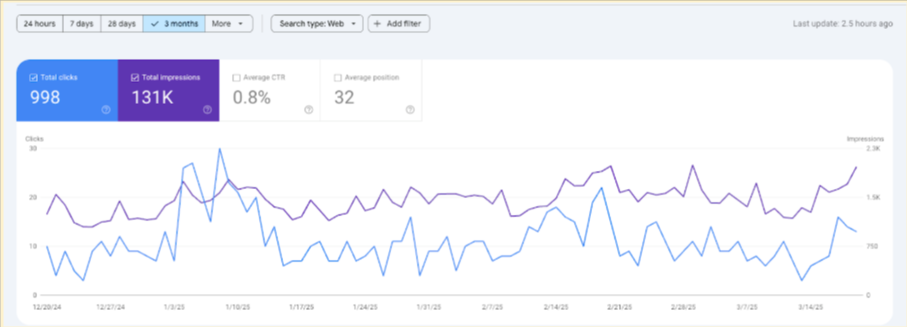
- Check page indexing: Find out which pages appear in search results and troubleshoot any indexing issues.
- Submit sitemaps: Help search engines discover and crawl your content faster.
- Identify errors: Detect technical problems that could affect your rankings, like broken links or mobile usability issues.
Google Search Console also lets you see which pages Google has indexed. If some pages aren’t indexed, you can find out why and fix the problem. Once resolved, submit them for reindexing.
Setting up these tools early ensures you stay on top of your site’s SEO health and performance.
3. Add Google Analytics To WordPress
Understanding how your website performs on the search is one thing. Knowing how the users behave on your website is another.
Google Analytics helps you with this. Understanding your audiences can improve your website design and content quality, eventually benefiting your business.
It helps you understand things like where the people are coming from to your website, which pages they view, how they behave on a certain page, and a lot more.
Benefits of Google Analytics:
- Understand Your Audience: Google Analytics provides insights into who visits your site, including their location, device, and demographics.
- Tracking User Behavior: See which pages are most popular, how long visitors stay, and where they drop off.
- Measuring Marketing Effectiveness: Evaluate the success of your campaigns by monitoring traffic sources and conversions.
How To Install Google Analytics in WordPress
If you’re looking to add Google Analytics to your WordPress site without using a plugin, here’s a straightforward guide:
- Create a Google Analytics Account: Go to Google Analytics and sign in with your Google account. If you don’t have one, you’ll need to create it.
- Set Up a New Property: Once logged in, click on ‘Admin’ and then ‘Create Property’. Follow the five steps to add your website details.
- Obtain Your Tracking ID: After setting up the property, Google Analytics will provide you with a tracking code. Copy this code; you’ll need it shortly.
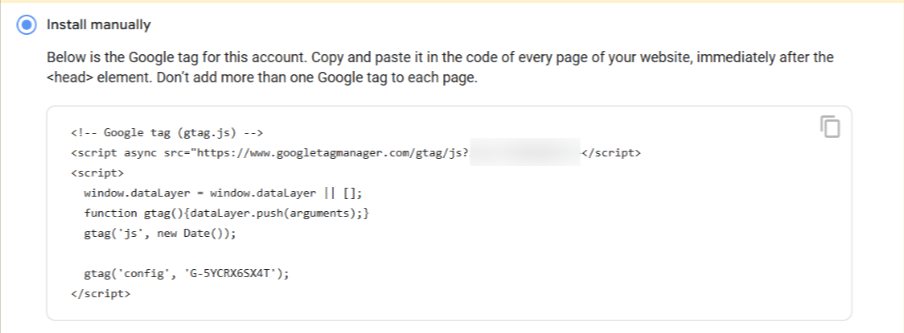
- Access Your Theme’s Header File: In your WordPress dashboard, navigate to ‘Appearance’ > ‘Theme Editor.’ On the right-hand side, locate and click on the ‘header.php’ file.
- Insert the Tracking Code: Paste the tracking code you copied earlier just before the closing </head> tag in the ‘header.php’ file.
- Save Your Changes: After pasting the code, click ‘Update File‘ to save your changes.
- Verify Installation: To ensure everything is working correctly, visit your website and check the ‘Real-Time’ section in your Google Analytics dashboard to see if your visit is being recorded.
Note: This is how you manually add the Google tag to your WordPress theme. Installing it via WordPress is recommended if you are a beginner.
By integrating Google Analytics with your WordPress site, you gain valuable data to optimize content, improve user experience, and boost your site’s performance.
4. Do Keyword Research For Your WordPress Site
Keyword research is how SEO experts and blog writers find topics that their target audience searches for online on search engines.
So, if you sell gardening equipment, it is best to use variations of keywords that your target audience mainly searches for on the search engines.
This way, they get what they are searching for, and you get traffic on your website. The better keywords you use, the higher quality traffic you get from those who actually buy from your website.
Keyword research also involves discovering and analyzing the phrases people type into search engines. SEO professionals often use your keyword research tools for this.
Popular Tools for Keyword Research
Several tools can assist in this process. However, these are the most popular ones I have encountered over the years.
- Semrush: A comprehensive platform offering keyword analysis, competitor insights, and more.
- Ahrefs: Renowned for its robust keyword explorer and backlink analysis features.
- Mangools: Known for its user-friendly interface and budget-friendly plans for beginners.
Finding Related Keywords
Incorporating related keywords naturally enhances relevance and helps search engines understand your content better.
For example, if your main keyword is “Apple,” related keywords might include “fruit,” “orchard,” or “health benefits” when discussing the fruit, or “technology,” “iPhone,” and “MacBook” if referring to the company.
The best way to find these for free is through the people also search the section on the Google search results page.
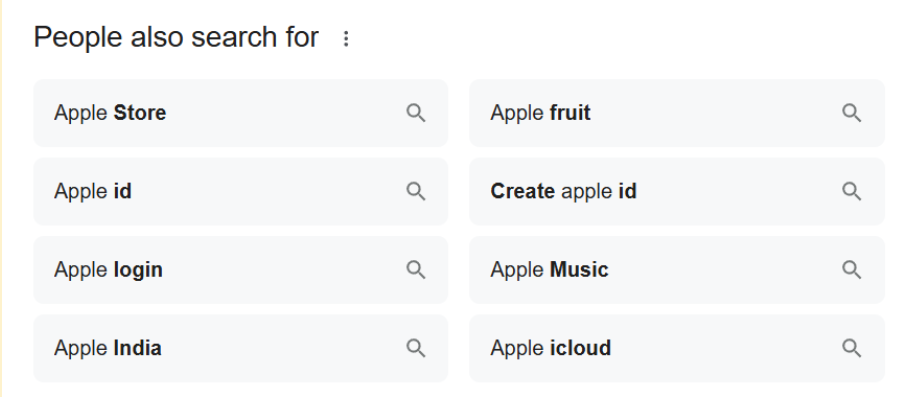
Avoiding Keyword Stuffing
More keywords do not equal better quality content and higher rankings. On the contrary, deliberately adding keywords can lead to penalties from search engines like Google.
Keyword stuffing is a common problem among newbies who do not understand how search engines work.
Instead, focus on delivering valuable, informative content that naturally incorporates keywords. This approach ensures a better user experience and maintains SEO integrity.
Conducting thorough keyword research and implementing these strategies can enhance your WordPress site’s SEO performance. This will help you attract more visitors and increase your engagement.
Tip: Plugins like RankMath often highlight when your content is heavy on the focus keyword. See the image below.
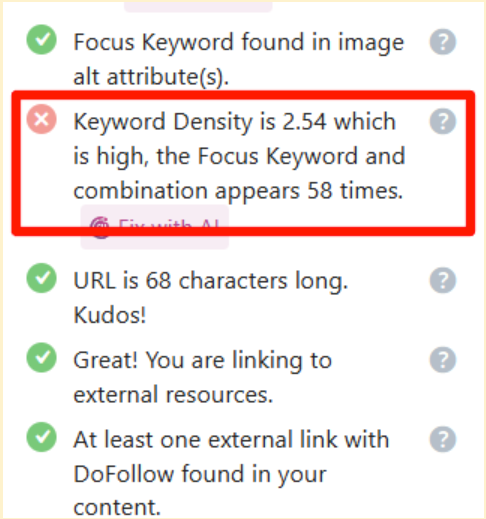
5. E-E-A-T
Google judges your pages based on the author’s credibility, the page’s authority, and the website as a whole. It does this to deliver the best content to its users on the first page.
And E-E-A-T is your key to ranking on the first page. E-E-A-T stands for Experience, Expertise, Authority, and Trustworthiness.
This framework guides content creators in producing high-quality material that ranks well in search results and, at the same time, answers the intent behind the question that the readers originally had.
Let’s break down each component:
1. Experience
Firsthand experience enhances content credibility. For instance, a product review from someone who has personally used the item provides valuable insights.
Similarly, a travel blog detailing personal visits to destinations where the author proves it with the images they took while on the visit. This offers readers authentic perspectives & makes them trust the content.
2. Expertise
Deep knowledge of a subject matter is crucial. Content authored by professionals or individuals with substantial experience in a field is more trustworthy.
For example, medical advice from a certified doctor carries more weight than that from an unqualified source.
3. Authoritativeness
This pertains to the recognition of your expertise by others. Being cited by reputable sites or receiving positive mentions can boost your authority.
Tip: High-quality content is often shared and cited more.
For instance, a financial analyst frequently quoted in major news outlets is seen as authoritative in finance.
4. Trustworthiness
Building trust involves transparency and accuracy. Ensuring your content is factual, providing clear author information, and maintaining a secure website (using HTTPS) are vital steps.
For example, sites with detailed “About Us” pages and accessible contact information tend to be more trusted by users.
By focusing on these elements, you can enhance your content’s quality, improve search rankings, and build stronger connections with your audience.
6. Optimize Your SEO Title And Meta Description
In SEO, your title acts as a hook—it’s the first thing users see. A strong title (under 60 characters) boosts CTR, especially when the target keyword appears early.
Similarly, while meta descriptions aren’t a direct ranking factor, they heavily influence CTR. Users often decide whether to click based on this snippet.
This is how it appears in the Google search results:

Aim for a concise summary of up to 160 characters that entices readers to click. Incorporate your primary keyword naturally to align with user intent.
To streamline this process, consider using SEO plugins like Rank Math, All in One SEO (AIOSEO), or Yoast.
These tools provide real-time suggestions and analyses, helping you craft optimized titles and meta descriptions effortlessly.
7. Use SEO-Friendly URLs
Creating SEO-friendly URLs is a simple yet effective way to boost your site’s search engine ranking. Here’s how you can do it:
- Keep URLs Short and Descriptive: Use concise URLs that clearly describe the page content,
e.g., www.yoursite.com/healthy-recipes instead of www.yoursite.com/p?123.
- Include Relevant Keywords: Incorporate target keywords in your URLs to improve search visibility,
e.g., www.yoursite.com/seo-tips for a page about SEO strategies.
- Avoid Special Characters and Numbers: Steer clear of unnecessary symbols or numbers that don’t add value,
e.g., www.yoursite.com/page1 can be more informative than www.yoursite.com/contact-us.
You can follow the steps listed below to adjust your permalink structure in WordPress:
- Go to your WordPress dashboard.
- Click on “Settings” and select “Permalinks“.
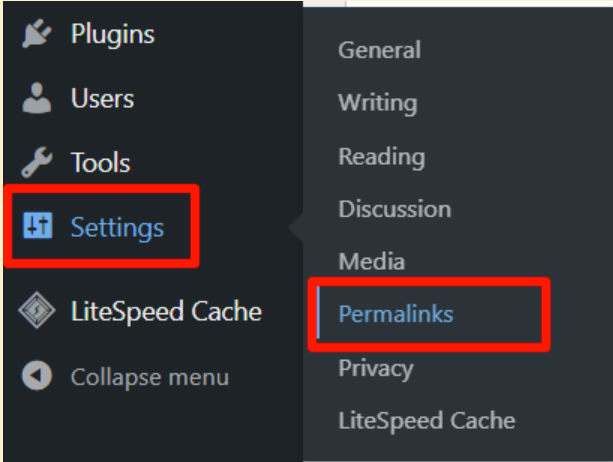
- Choose the “Post name” option for clean, keyword-rich URLs.
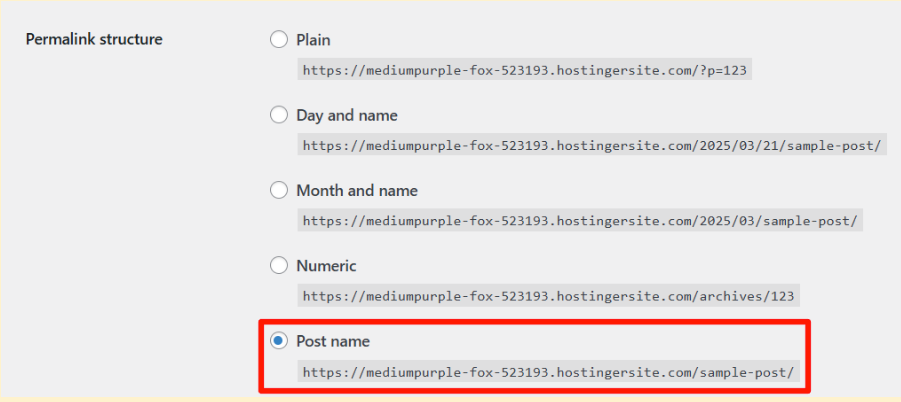
- Scroll down and click on Save Changes.
This setup not only enhances SEO but also makes your URLs more user-friendly.
8. Make Sure to Add Alt-Text to Your Images
Optimizing your images is key for better SEO. Alt-text, or alternative text, helps search engines understand your images. This improves your site’s visibility.
Write concise alt-text that describes the image’s purpose, keeping context in mind. This makes me come up with better descriptions since I have a fresher context of the post.
Here’s how to add alt-text to my images:
- Insert the image at the desired spot within your article by selecting the image block option.
- Upload it from your computer or choose it from the media library if you have already uploaded it there.
- Click on the image once to select it. This will also show you the image options like the ‘Alt Text’ box on the right-hand side.
- Enter a brief, descriptive text about the image.
- Save your changes after you add alt-text to all your images.
By doing this, you’re making your site more accessible and improving your SEO.
9. Add Internal Links To Your Content
Internal links are hyperlinks that connect one page of your website to another. They play a crucial role in SEO by distributing “link juice,” which is the value or authority a page passes to another.
This process helps search engines understand your site’s structure and boosts the ranking of linked pages. Moreover, internal links enhance the user experience by guiding visitors to related posts, keeping them engaged longer.
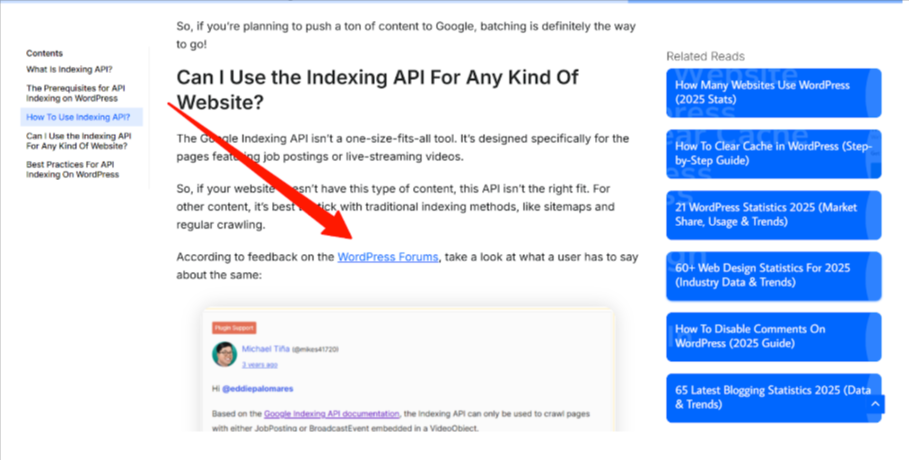
For instance, if you have a blog about healthy recipes, linking a post on “10 Quick Breakfast Ideas” to another on “Healthy Smoothie Recipes” provides readers with more valuable content.
Similarly, I have written a post about 21 WordPress website examples for beginners to take inspiration from. Now, in this context, the way I have added the above link fits perfectly since I’m talking about WordPress websites here.
To streamline the process of adding internal links, consider using plugins like Link Whisperer. This tool suggests relevant internal links as you write, making it easier to build a well-connected site.
10. Improve the Readability Of Your Content
What’s the use of a piece of content, no matter how carefully written, if it is not read in the first place?
Google likes content that is straightforward, easy to read & understand, and precise. This is why readability is also important.
Attention spans are scarce, and large blocks of text do not help. Instead, find ways to deliver more meaning through less text. Use text sparingly.
Here is how you enhance your content’s readability:
- Break up large text blocks to give readers’ eyes a rest.
- Use bullet points and short paragraphs for clarity and to keep the reader engaged. (Notice how I am using a bullet point as you read this.)
- Use headings like H1 (one per post), and H2’s and H3’s as needed and only if doing so makes sense.
- Provides an overview, a table of contents at the start of your blog allowing readers to jump to sections of interest.
- Use more images and videos if necessary.
- Use tools like Grammarly that assist you in catching grammatical errors and improving sentence structure.
- Use words sparingly. Speak more with less.
By implementing these strategies, your content becomes more accessible and engaging, leading to better reader retention and SEO performance.
11. Ensure That Search Engines Can Easily Find Your Website
Writing user-friendly content is one thing, but now you have to make sure that Google can find it, crawl it, and list it in its search results.
This is the technical side of SEO, but it’s quite easy. Follow the steps listed below to make sure Google can crawl your website’s pages.
Note: If you use a plugin like RankMath and have connected your Google Search Console to it, you do not need to follow the manual instructions listed below. RankMath will automatically submit the sitemap on your behalf.
Step 1: Go to Settings > Reading.
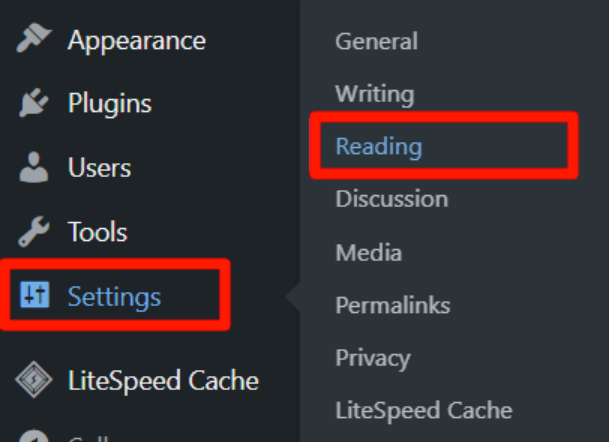
Step 2: Ensure the “Discourage search engines from indexing this site” option is unchecked. (In most cases, it is already unchecked).
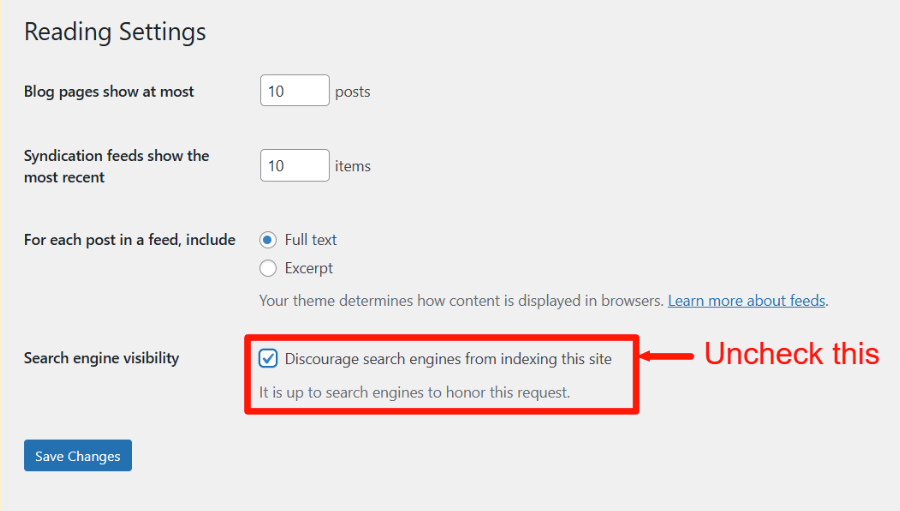
Step 3: Sign in to Google Search Console.
Step 4: Select your website property.
Step 5: Navigate to the Sitemaps section.
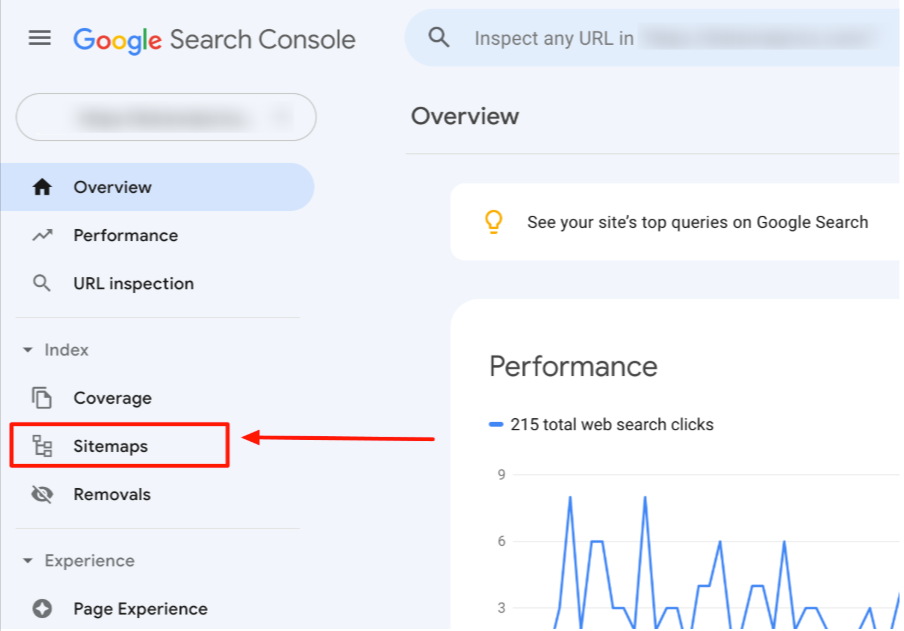
Step 6: Enter your sitemap URL (usually yourwebsite.com/sitemap.xml).

Step 7: Click Submit.
This submission helps Google crawl and index your site more effectively.
By following these steps, you enhance your site’s visibility, making it easier for search engines to discover and rank your content.
12. Optimize Your Website for Mobile
Google prioritizes mobile-first content, meaning it indexes and ranks sites based on their mobile versions. To assess your site’s mobile performance, use Chrome DevTools:
Step 1: Open your website in Google Chrome.
Step 2: Right-click and select “Inspect.”
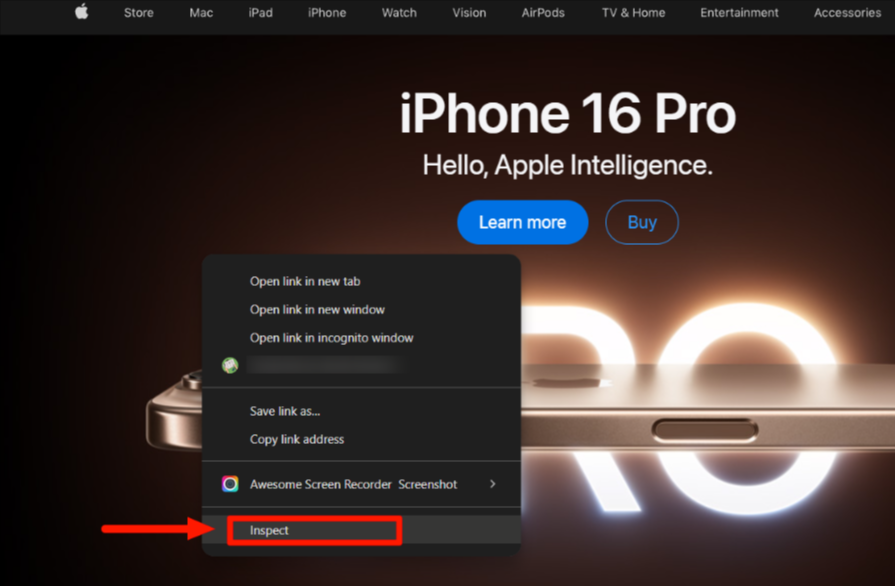
Step 3: Navigate to the “Lighthouse” tab.
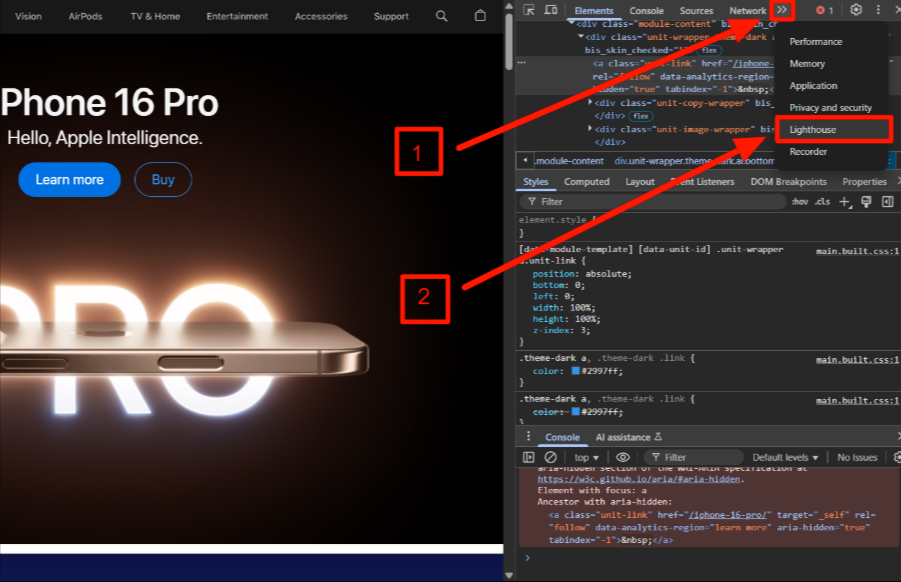
Step 4: Choose “Mobile” and click “Analyze page load.”
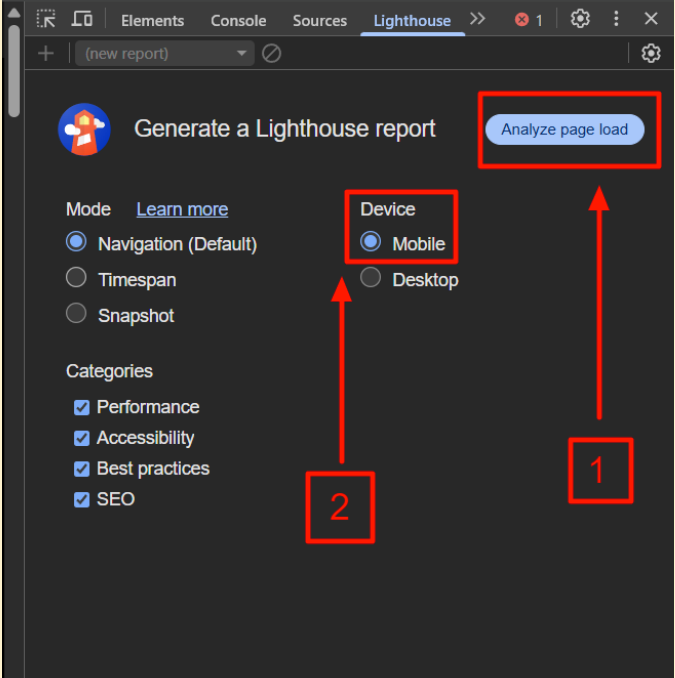
This analysis provides various scores for your site’s mobile load times and overall performance. Focus on improving your Google Lighthouse scores to enhance user experience on mobile devices.
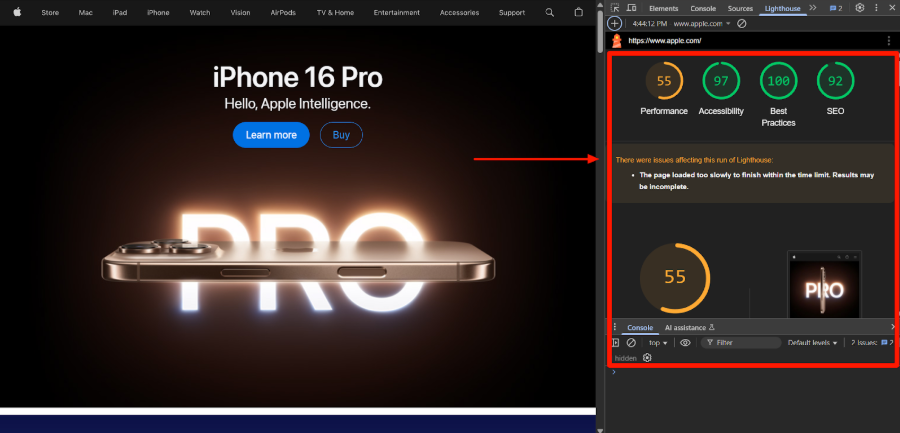
Consider optimizing images, using browser caching, and minimizing JavaScript. A faster, mobile-optimized site not only pleases visitors but also boosts your search engine rankings.
13. Check Your WordPress Website Speed
Walmart saw a 1% increase in its revenue for every 100ms increase in its page speed. That’s how important page speed is.
Page load time is crucial for both user experience and search rankings. Google now considers it a ranking factor.
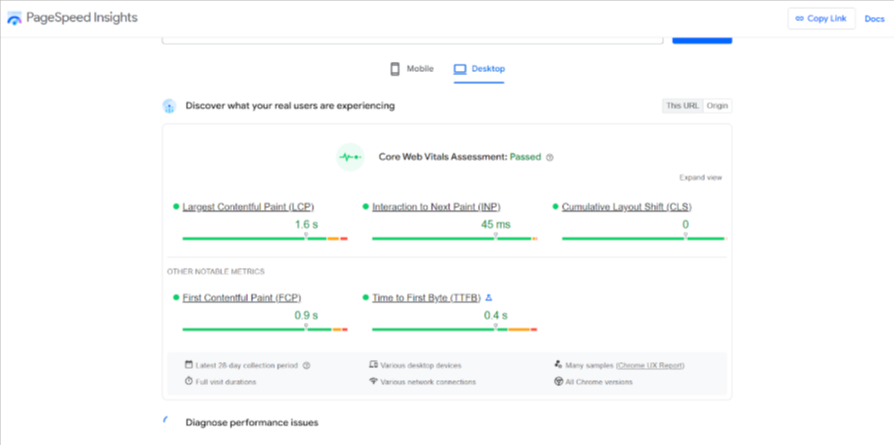
Additionally, loading speed affects your Google Core Web Vitals score, which measures user experience aspects like loading performance.
Consider using a Content Delivery Network (CDN) to distribute content efficiently to enhance speed if you already have a well-established website that gets consistent traffic.
Opt for a lightweight theme to reduce load times. If your site is image-heavy, compress images to decrease file sizes without losing quality. These steps can significantly improve your site’s performance.
Is WordPress A Good Choice For SEO?
WordPress is considered one of the best platforms for SEO. Notable names like Sony Music, Techcrunch, Time Magazine, Wired, and NASA all use it as their primary content management system.
Here is why WordPress is a great choice for SEO:
- SEO-Friendly Structure: WordPress’s architecture facilitates easy crawling and indexing by search engines.
- Extensive Plugin Ecosystem: Plugins like Yoast SEO and Rank Math offer tools for optimizing meta tags, XML sitemaps, and more.
- Customizable Permalinks: WordPress allows for the creation of clean, descriptive URLs, enhancing both user experience and search engine understanding.
- Responsive Themes: Many WordPress themes are mobile-friendly, aligning with Google’s emphasis on mobile-first indexing.
- Content Management Efficiency: Designed originally as a blogging platform, WordPress excels in content creation and management, which is crucial for SEO success.
However, it’s essential to use high-quality plugins and lightweight themes from trusted sources, keep them updated, and follow best practices to maximize SEO benefits.
Related Reads:
Conclusion: WordPress SEO Is The Foundation for Great SERP Rankings
WordPress is a great choice as a content management system (CMS). With all the SEO-friendly themes and plugins it supports, users like you and I can focus on creating high-quality content.
It is best to start from the basics, like optimizing titles, meta descriptions, and images, focusing on the E-E-A-T framework for writing content, using SEO-friendly URLs, etc.
SEO is ever-evolving, but these practices remain vital. With all the new updates Google rolls out, this is for sure. Readers will always be at the front and center of Google’s focus.
So, create content that is for the users first; SEO should be the second priority. This is what Google and its readers like! A WordPress SEO checklist like this one can get you started on the right path.
FAQs
The 4 P’s of SEO are product, price, place, and promotion—help tailor the offer to the target audience, optimizing content for higher visibility in search engine results.
The 3 Cs of SEO are content, code, and credibility, which are fundamental to improving search engine rankings by focusing on quality content, technical performance, and trustworthiness.
The 4 pillars of SEO are On-page SEO, Off-page SEO, Technical SEO, and Content, each essential for enhancing a website’s search engine visibility and performance.
The Golden Rule of SEO focuses on creating high-quality, user-centered content, prioritizing value for the user over search engine manipulation.

